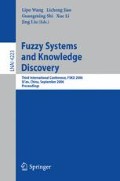Abstract
This paper presents a new parallel algorithm, called “block-based wavefront”, to produce optimal pairwise alignment for biological sequences with reliable output and reasonable cost. It takes advantage of dynamic programming and parallel computing to produce optimal results in reasonable time. More importantly, the algorithm makes it possible for biologists to analyze datasets that were previously considered too long, often leading to memory overflow or prohibitively long time for computation.
Access this chapter
Tax calculation will be finalised at checkout
Purchases are for personal use only
Preview
Unable to display preview. Download preview PDF.
References
Needleman, S.B., Wunsch, C.D.: A general method applicable to the search for similarities in the amino acid sequence of two proteins. J. Mol. Biol. 48, 443–453 (1970)
Smith, T.F., Waterman, M.S.: Identification of common molecular subsequences. J. Mol. Biol. 147, 195–197 (1981)
Smith, T.F., Waterman, M.S.: Comparison of biosequences. Adv. Appl. Math. 2, 482–489 (1981)
Pearson, L.: Improved tools for biological sequence comparison. Proc. Natl. Acad. Sci. USA. 85, 2444–2448 (1988)
Altschul, S.F., Gish, W., Miller, W., Myers, E.W., Lipman, D.J.: Basic local alignment search tool. J. Mol. Biol. 215, 403–410 (1990)
Gish, W., States, D.J.: Identification of protein coding regions by database similarity search. Nature Genet. 3, 266–272 (1993)
Amdahl, G.M.: Validaity of the single processor approach achieving large-scale computing capabilities. In: AFIPS Conference Proceedings, vol. 30, pp. 483–485. AFIPS Press, Reston (1967)
Author information
Authors and Affiliations
Editor information
Editors and Affiliations
Rights and permissions
Copyright information
© 2006 Springer-Verlag Berlin Heidelberg
About this paper
Cite this paper
Du, Z., ji, Z., Lin, F. (2006). Parallel Computing for Optimal Genomic Sequence Alignment. In: Wang, L., Jiao, L., Shi, G., Li, X., Liu, J. (eds) Fuzzy Systems and Knowledge Discovery. FSKD 2006. Lecture Notes in Computer Science(), vol 4223. Springer, Berlin, Heidelberg. https://doi.org/10.1007/11881599_61
Download citation
DOI: https://doi.org/10.1007/11881599_61
Publisher Name: Springer, Berlin, Heidelberg
Print ISBN: 978-3-540-45916-3
Online ISBN: 978-3-540-45917-0
eBook Packages: Computer ScienceComputer Science (R0)

